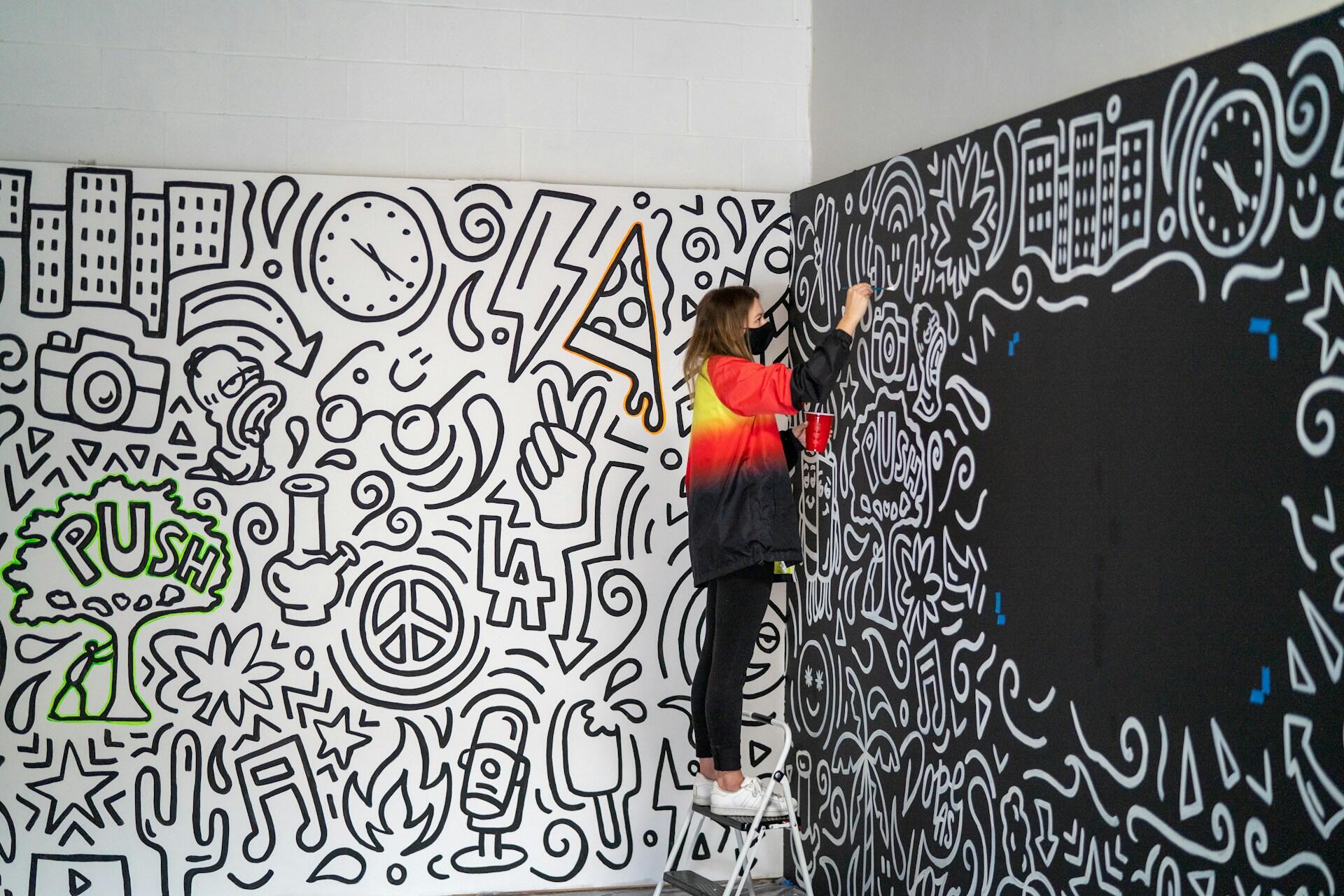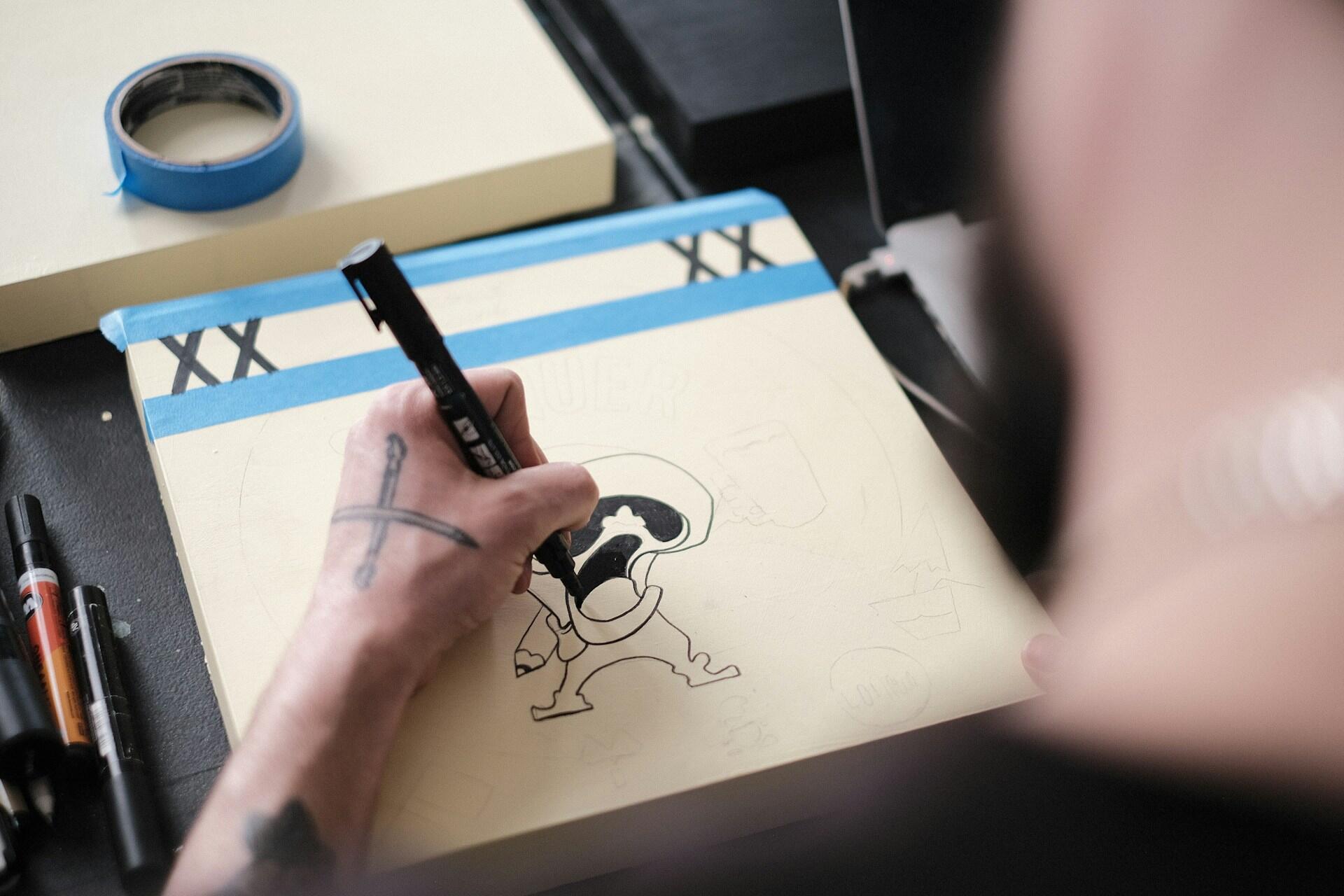While ATAR may seem like the only route to university, it's important to remember that there are several flexible and empowering alternative pathways, such as portfolio and work experience entry.
Many universities in Australia offer portfolio and workplace experience pathways as a way into courses where students can show off their skills, professional experience, or creative achievements. This could be the solution for creative design, arts, and architecture courses or for mature-age learners with industry experience.
Here's our guide breaking down how portfolio and work experience entry works, who it's for, how to put together a strong submission, and how to apply through Australian universities.

What Is Portfolio and Work Experience Entry?
So what exactly is portfolio and work experience entry?
While many courses use a standard ATAR to judge a student's eligibility for a course and whether or not they're admitted, it's not the only way to gain admission into university courses.
With portfolio and work experience entry, students can gain admission through their skills, achievements, and professional experience.
This makes portfolio and work experience entry a great option for students interested in creative degrees or prospective students with extensive industry experience.
Portfolio Entry Explained
A portfolio is a selection of work that demonstrates a person's skills, creativity, or technical ability. In portfolio entry, your portfolio can be used to gain entry into creative courses like:
- Visual Arts
- Design (Graphic, Fashion, Interior)
- Architecture
- Media and Digital Arts
A portfolio shows an applicant's talents and technical proficiency in a given area. For example, a Bachelor of Design applicant may submit a visual portfolio with sketches, digital artwork, and project descriptions.

Work Experience Entry Explained
The work experience entry pathway is for students who can demonstrate that they have extensive practical knowledge and skills thanks to their work or industry training.
Some of the most common fields for workplace entry include:
- Engineering
- Business and Management
- Science and Technology
- Health and Community Services
For those without formal academic experience and mature-age students, work experience entry is used to assess their industry experience.
A professional with 5+ years of experience in construction may use work experience entry for a Bachelor of Construction Management program.
Both portfolio and work experience entry are flexible alternative admission pathways for students who've decided higher education is their next step. They know that despite lacking formal qualifications, they have projects or experience demonstrating their skills and achievements.
Who Can Apply Using a Portfolio or Work Experience?
Portfolio and work experience entry, with its flexible approach, is a welcoming alternative to the ATAR, especially for students from diverse backgrounds.
Students are assessed on their skills, achievements, and practical experience instead of solely on their academic results.
So, who are these pathways best suited for? Let's break it down.
1. Creative Applicants
Portfolio entry is very common for students applying to creative degrees where artistic ability, design skills, or creativity are key.
✅ Suitable Courses
- Visual Arts
- Graphic Design
- Architecture
- Media and Digital Arts
A student applying for a Bachelor of Fine Arts may submit a collection of paintings, digital artwork, and photography showcasing their creative skills.
2. Mature-Age Students
Mature-age students, especially those over 21, can apply using their work experience instead of their academic qualifications or ATAR. This makes portfolio and work experience entry ideal for anyone who:
- Has been working in the industry for several years.
- Has relevant professional experience but lacks formal academic credentials.
Mature-age students may also consider prep or bridging courses specifically designed for the course they'd like to do. Completing these courses usually provides direct access to a bachelor's degree.
A construction worker applying for a Bachelor of Construction Management using site experience and industry certifications.

3. School Leavers Without an ATAR
There are portfolio-based early entry programs for students who have yet to get an ATAR. These programs are for those who can demonstrate incredible talent in their field.
A high school student applying for a Bachelor of Design at UNSW through the Portfolio Entry Scheme by submitting creative projects completed during Year 12.
4. Career Changers and Professionals
Anyone with experience looking to transition into a new industry (or related industry) could use work experience entry to find their way into university programs.
A marketing manager applying for a Bachelor of Business using their work portfolio and professional achievements.

How Universities Assess Portfolios and Work Experience?
We've spoken about portfolio and work experience entry, but how do universities judge these?
With standardised academic achievement through the ATAR, things are much clearer, but here's something your potential university program might be looking for.
1. Key Assessment Criteria for Portfolios
When reviewing portfolios, universities consider:
Relevance to the Course
- Work must demonstrate skills related to the chosen degree.
- Example: A Bachelor of Architecture applicant should include building models, sketches, or 3D designs.

Quality of Work
- Emphasis on technical skills, creativity, and originality.
- Clean presentation and visual clarity matter.
Diversity of Skills
- Showcasing a range of techniques and mediums.
- Example: A visual arts applicant submitting drawings, photography, and sculpture work.
Speaking of diversity, there are often special entry programs for those from backgrounds underrepresented at Australian universities.
Supporting Documentation
- Captions or project descriptions explaining the creative process.
- Artist's statements or reflections can add context to the work.
2. Key Assessment Criteria for Work Experience
For work experience entry, universities assess:
Years of Experience
- Minimum duration of industry experience (varies by course and institution).
Professional Competence
- Demonstrated skills through real-world tasks and roles.
- Certifications, awards, or professional references.
Relevance to the Degree
- Example: For a Bachelor of Engineering, experience in project management or technical roles would be assessed.
Evidence Provided
- Resume detailing roles and responsibilities.
- Letters of recommendation from employers.
- Certificates of prior training or industry awards.

3. Additional Assessment Methods
Some universities may require:
- Interviews: To discuss the applicant's work and experiences.
- Supplementary Tasks: For example, a design challenge or written reflection.
UNSW's Portfolio Entry Scheme requires a visual portfolio and a written statement explaining the creative process.
When reviewing portfolios or work experience, universities will focus primarily on quality, relevance, and evidence.
Examples of Universities Offering Portfolio and Work Experience Entry
Several Australian universities offer portfolio and work experience entry pathways. As mentioned, these are mainly for creative courses or mature-age students.
These schemes allow students to gain admission into bachelor's degrees based on skills, achievements, and professional experience rather than relying on their ATAR.
1. UNSW Portfolio Entry Scheme
The University of New South Wales (UNSW) offers a Portfolio Entry Scheme for selected courses within its Arts, Design, and Architecture faculty.
Eligible Courses
- Bachelor of Design
- Bachelor of Fine Arts
- Bachelor of Media (Screen and Sound Production)
Submission Requirements
- A digital portfolio showcasing creative projects.
- A written statement describing the creative process and inspiration.
Assessment Criteria
- Creativity, technical skill, and alignment with the course objectives.
2. University of Sydney – Mature-Age Entry Program
- The University of Sydney offers a Mature-Age Entry pathway for students aged 21 or older who do not meet standard ATAR requirements.
Eligibility
- Applicants with significant work experience or professional certifications.
- Some courses may require additional assessments or interviews.
Submission Requirements
- Resume outlining professional roles and skills.
- Employer references and certificates.
- Personal statement explaining the motivation for study.
Applicable Courses
- Bachelor of Business
- Bachelor of Health Sciences
- Bachelor of Education
3. RMIT University – Creative Programs Portfolio Entry
- RMIT University offers a portfolio pathway for entry into creative fields where artistic skill and practical experience are central to admissions.
Eligible Courses
- Bachelor of Design (Communication Design)
- Bachelor of Photography
- Bachelor of Fine Arts
Submission Requirements
- Online portfolio showcasing original creative work.
- Optional interview, depending on the program.
4. TAFE and Work Experience Entry (General Pathway)
Many TAFE institutes partner with universities to allow students with VET qualifications and work experience to enter directly into a bachelor's degree program.
Common Degrees
- Bachelor of Nursing
- Bachelor of Construction Management
- Bachelor of Community Services
Application Process
- Submission of Certificate IV or Diploma with evidence of relevant work experience.
In these instances, gaining admission into programs emphasises skills, creativity, and professional achievement over academic results.
Benefits of Portfolio and Work Experience Entry
There are several benefits to portfolio and work experience entry pathways.
They provide much more flexibility to anyone who didn't complete Year 12 with a competitive ATAR, mature-age students returning to education, and those with significant professional experience but limited formal qualifications.
It also means that those with unique talents and skills, which aren't as easily measured through academic testing, can gain admission to university courses to develop their skills.
The work experience entry also recognises practical expertise gained through employment, freelance work, or industry roles, helping those changing careers.
Suppose you're looking to pursue higher education but don't have the necessary academic qualifications. In that case, there's likely still a pathway for you.
Résumer avec l'IA :















